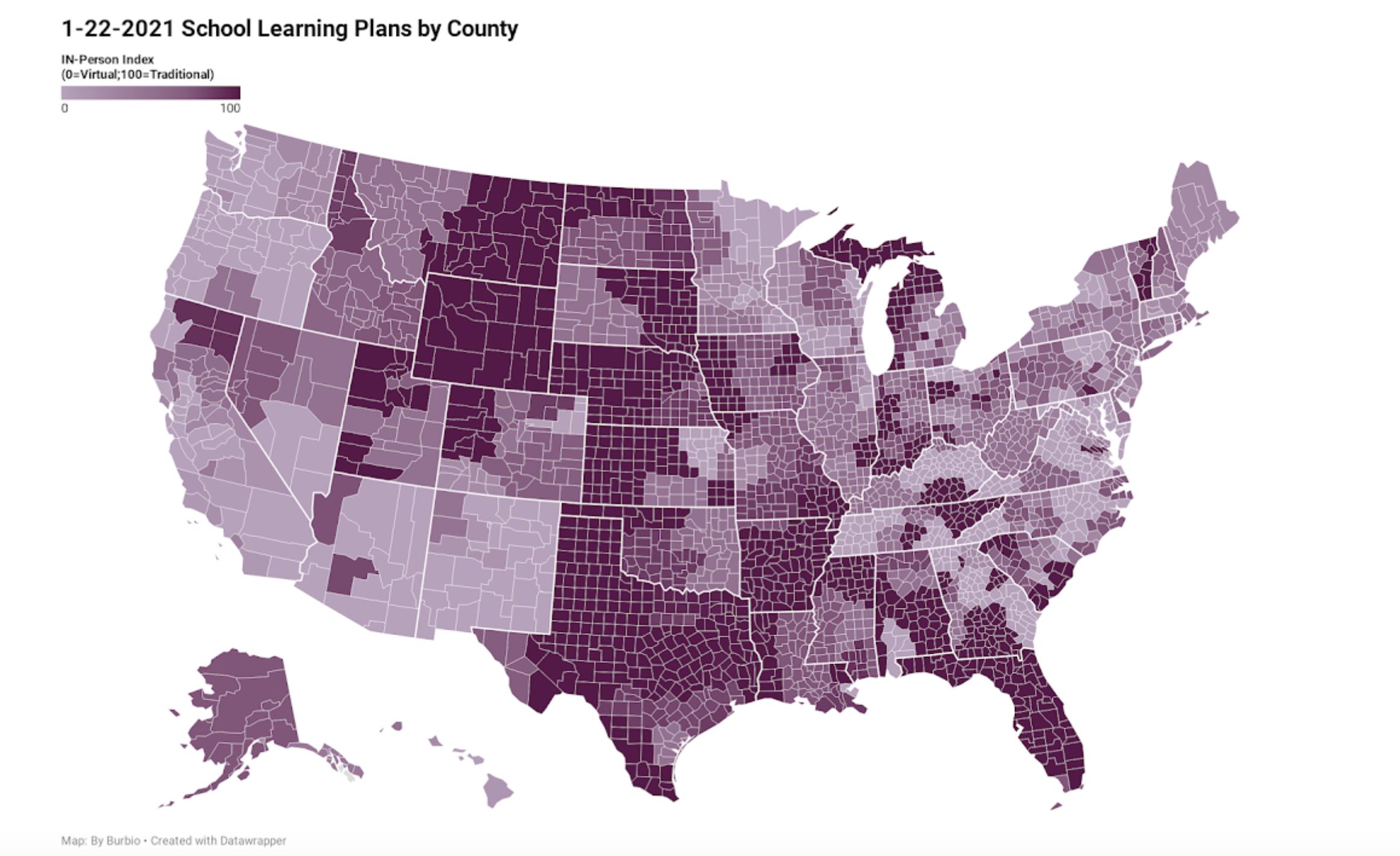Almost a year after COVID-19 reached the United States and government-mandated lockdowns began shutting down nearly every aspect of American life, many schools across the nation have yet to reopen for in-person learning.
While the science and data, previously ignored by the virtue-signaling left, suggests that educational leaders should seriously consider ending virtual schooling for the sake of students’ mental health and academic advancement, many school districts remain closed, offering only online classes or virtual learning options to millions of children and teens.
Even as the COVID-19 vaccine becomes more readily available to members of the community, including teachers, authoritative voices in the education world have expressed hesitancy and even cast doubt on the decision to abolish remote learning.
“Given the seemingly intractable health and labor challenges, some district officials have begun to say out loud what was previously unthinkable: that schools may not be operating normally for the 2021-2022 school year,” the New York Times wrote, amplifying concerns over vaccine viability and virus transmission even after most teachers will have been vaccinated.
In Burbio’s K-12 School Opening Tracker, a clear pattern emerges with regard to which cities and states tend to favor in-classroom schooling versus staying online. While red states such as Texas, Nebraska, Wyoming, and Florida are overwhelmingly giving their students opportunities to fully learn in person five days a week, bluer coastal states such as New York, Maine, California, and Oregon are keeping students at home, with only some of the more rural districts dipping their toes into a hybrid learning schedule.

In these states, cities such as New York City; San Francisco; Fairfax, Virginia; Scranton, Pennsylvania; Newark, New Jersey; Seattle; Portland; Minneapolis; Washington, D.C.; and Atlanta are still operating on almost a fully remote basis, delaying the return of students even longer than their peers in other parts of the country and the world.
Another clear pattern in school reopenings occurs between the types of schools. While only 5 percent of private schools remained virtual in the fall 2020 semester, approximately 60 percent of public schools stayed online, teaching students as young as 4 years old over Zoom.
Some schools began to shift their perspectives on reopening after extended closures had adverse effects on their students’ well-being. After an alarming decline in students’ mental health and 18 suicides between March and December in children as young as 9 years old, Clark County, Nevada, was forced to evaluate the effectiveness of keeping children and teens home and learning online.
“When we started to see the uptick in children taking their lives, we knew it wasn’t just the Covid numbers we need to look at anymore,” Clark County Superintendent Jesus Jara told the New York Times. “We have to find a way to put our hands on our kids, to see them, to look at them. They’ve got to start seeing some movement, some hope.”
While the Trump administration and others warned that school closures would do more harm than good, it took the deaths of students at their own hands to shock one district into reopening.
“Given the politically charged atmosphere this summer, many of those warnings were dismissed as scare tactics,” the Times wrote. “Parents of students who have taken their lives say connecting suicide to school closings became almost taboo.”
Despite parents’ growing opposition, as recorded by Pew Research, to the difficulty and dangers that come with remote learning and concerns about their children’s mental health and educational growth, the schools that have returned to hybrid learning or only offered a small selection of students the option to be in the classroom are receiving strong pushback from teachers unions that claim the return is unsafe and will result in the deaths of staff and students.
Earlier this month, more than 100 Chicago teachers refused to show up on their first day back to work in the spring semester. Instead of arriving at school ready to teach on their first day back in person, some teachers hosted a “teach-in,” conducting classes online while camping outside the school in the freezing temperatures. As a result, Chicago Public Schools docked their pay and blocked them from teaching, even remotely, the thousands of pre-kindergarten and special education students who were allowed back in classrooms in January.
This disciplinary action, however, did not stop the unions from refusing to work. This week, the Chicago Teachers Union, once again, voted to resist the district’s decision to allow some students back in the classroom for in-person learning, a demand that the district eventually obliged.
In West Virginia, the American Federation of Teachers-West Virginia announced its decision to sue the state Board of Education, the state Department of Education, and other county boards of education “to protect the health and safety of school employees,” after the state Board of Education unanimously passed a motion that prohibited schools from staying virtual after Jan. 19, overturning decisions by county boards to stay closed.
Despite the clear complications of virtual learning for students, teachers, and parents, especially those who work outside the home, school districts are extending their remote learning period, some beyond the date that they first began teaching over Zoom in March 2020. These educational institutions that receive federal tax dollars to operate are denying children the educations that they not only want but have been declared necessary by health officials, including Anthony Fauci.

